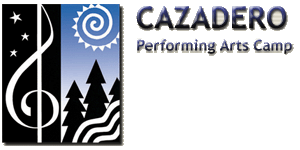Lesson Plan 1: Redwood
Forest
(Grade Level 5-6-7-8)
First posted April 25, 2004 Last
updated June 19, 2009

Remember these points from the Lesson
Plan Homepage:
(1) These lesson plans are not rigid requirements,
but a starting point for the Nature Counselor's
plan for teaching a particular day's experience.
(2) The activity should be fun and emphasize
active learning on the student's part: ask a
question, don't just state a fact.
(3) You should employ hands-on as much as possible.
(4) Plan each session to also allow time for
making entries in the Nature
Journal. |
Prior to the
session
(1) Read the section on the web site about the Redwood
Forest. You cannot teach what you do not understand.
(2) Check to be sure you know where the natural objects
that you will be discussing are. If necessary, plant
the objects around where you can pretend to "find"
them. Redwood leaves are everywhere, but check so that
you know where there are lots of cones. Have a Douglas-fir
cone in your pocket, or have a sugar pine cone (in the Nature Coursellor's box) hidden.
(3) Have the 95 foot piece of string and the tree cross-sections.
You can learn more about tree
rings and dendrochronology
on the web. There are cut sections of trees in the Nature Couselor's three boxes and there is a section of cut redwood tree in the fenced area just in front of the dining room.
Session
Start the session by going over to the family group
of redwoods, just downstream from the dining hall by
50 feet and between the road and the tents (but not as far as the pool). Walk inside
the family group, have the students look upward. Talk
about how tall the trees are (394 feet is the tallest
on record, we have not yet measured the trees at Caz),
how old (2000 years), water requirements (a comparatively
short 148 foot redwood uses 1,323 pounds, or about two-thirds
of a ton, or a small swimming pool, of water daily).
Try to make the measurements relative to something the
students can understand: How tall are you? A redwood
is as tall as 80 kids standing on top of one another!
How much water can you drink? A redwood drinks 44,000x
as much as you can!
Move outside the family group and have the students
to look for both a cone and a dead leaf. Discuss the
size of the seeds (samples are in the Nature Councellor's boxes) and
the size of the tree. Have the students tape a leaf
into their Journal and draw a redwood, a cone, and a
leaf. Have them draw a picture of themselves at the
bottom of the tree, trying for the correct proportionate sizes. Compare
the size of a redwood cone to a Douglas-fir or sugar
pine cone.
Make a ring of hands. Then have them expand it to about
30 feet across. Have a piece of string 95 feet long
and then tie the ends together. The students then spread
the string out into a circle. The resulting circle is
about the same size around as a redwood with a 30 feet
diameter.
Hand out the tree cross-sections. Look at the rings,
discuss how they are made, estimate how old that tree
was, compare it to the students' ages.
Walk over to the cut section of a redwood tree (in the fenced area just in front of the dining room).
If time permits, have the students look around camp
and identify how other trees are different from redwoods.
They do not need to know the names of the trees, just
how they are different: shorter, different bark, different
leaves, not in groups, etc.
Back to the Lesson
Plan Homepage
|

